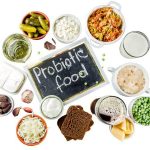Understanding Canadian Food Labelling Regulations: A Guide to Country-of-Origin Food Labelling in Canada
With more Canadian consumers prioritizing transparency and supporting local businesses, food brands are increasingly looking to highlight their Canadian roots. But under Canadian food labelling regulations, using the phrase “Canadian” on your product packaging isn’t as simple as it sounds. Canada has specific labelling guidelines to ensure that origin claims are clear, truthful, and not misleading to consumers. Claims about Canadian origin must be accurately advertised and reflected in all advertising materials, not just on the label.
This guide breaks down the rules and requirements around country of origin food labelling in Canada, including when such claims are mandatory, which labels are permitted, and how a company must use national symbols appropriately while providing correct information in both labeling and advertising.
Introduction to Food Labelling
Food labelling plays a vital role in the Canadian food industry, ensuring that consumers have access to the information they need to make healthy and informed choices about the food they purchase and eat. The Canadian government, through Health Canada, sets and enforces strict food labelling requirements to protect consumers and promote transparency. These regulations apply to all food products sold in Canada and require food manufacturers to provide clear ingredient lists, accurate nutrition facts tables, and, where applicable, country of origin information. By following these regulations, businesses not only comply with the law but also help Canadians make better decisions about their food, supporting trust in Canadian food products and the companies that produce them.
When Is Country-of-Origin Food Labelling Required in Canada?
While most foods sold in Canada are not required to declare a country of origin, Canadian food packaging rules do mandate such disclosures for certain food products. These include:
- Wine and brandy
- Dairy products
- Honey
- Fish and seafood
- Fresh fruits and vegetables
- Shelled eggs and processed egg products
- Meat products, maple products
- Processed fruits and vegetables
In these cases, failure to include origin details can result in non-compliance with food labelling regulations in Canada.
Understanding “100% Canadian,” “Product of Canada,” and “Made in Canada” Labelling
“100% Canadian”
This label has the strictest criteria. It can only be used if all ingredients, processing, and labour are sourced from within Canada. Even trace amounts of foreign content disqualify the use of this claim. It can also apply to individual ingredients, such as “100% Canadian oats.” Another example is “100% Canadian milk,” which means the milk must come from cows milked and processed entirely in Canada.
“Product of Canada”
This origin claim is allowed when all or virtually all (at least 98%) of the ingredients, labour, and processing are Canadian. Minor non-Canadian inputs—such as imported spices or vitamins—are considered acceptable if they do not affect the integrity of the claim. However, the majority of ingredients must be produced in Canada.
Products re-imported into Canada after export are not eligible for this claim unless they remain unchanged in both content and packaging.
“Made in Canada”
This label may be used when a product is manufactured and underwent its last substantial transformation in Canada. However, it must be accompanied by a qualifying statement indicating the ingredient sources, such as:
- “Made in Canada from domestic and imported ingredients”
- “Made in Canada from imported ingredients”
These Made in Canada label requirements help clarify the true origin of the food’s contents while promoting domestic processing.
Other Descriptive Origin Statements That Support Canadian Claims
For products that do not meet the criteria for “Product of Canada” or “Made in Canada,” you can still make origin-related claims—as long as they’re clear and verifiable. Here are some examples of such claims:
- “Roasted and blended in Canada” (e.g., for coffee made with imported beans)
- “Distilled in Canada” (for bottled water processed domestically)
- “Canned in Canada”
- “Processed/Prepared/Packaged in Canada”
Ingredient-specific claims like “Made with Canadian blueberries” are also allowed, provided they are truthful and not misleading. The company or manufacturer is responsible for ensuring these claims are accurate, truthful, and verifiable according to Canadian regulations.
Can You Mention Multiple Countries on a Label?
Typically, Product of Canada labelling rules do not allow a single origin claim to list multiple countries (e.g., “Product of Canada and the United States”). However, you may describe individual ingredients by country of origin if relevant, and products must be labeled in accordance with Canadian regulations when listing multiple origins. For example: “A blend of Canadian and American soybean oil” This approach is especially relevant for imported goods containing ingredients from more than one country. It complies with food labelling compliance standards in Canada while maintaining consumer clarity.
Nutrition and Ingredient Labelling
Nutrition labelling is a cornerstone of food labelling in Canada, giving consumers essential details about the nutritional value of the food products they buy. Every prepackaged food must display a nutrition facts table, which outlines serving size, calories, and the percentage of daily values for key nutrients. This nutrition label helps Canadians compare products and make choices that align with their health goals. Ingredient labelling is equally important, as it lists all components in descending order by weight, including any food additives, vitamins, or minerals. Health claims and nutrient content claims must be supported by scientific evidence and comply with Canadian food labelling requirements. By providing accurate and comprehensive nutrition and ingredient information, food manufacturers help consumers avoid allergens, understand what they are eating, and make informed, healthy choices.
Using Canadian Symbols on Food Packaging
The use of Canadian symbols on the package and food product label is regulated under Canadian food packaging rules. The Canadian flag and the 11-point maple leaf are protected national symbols.
- The Canadian flag requires approval from the Department of Canadian Heritage before it can appear on a food product label or package.
- The 11-point maple leaf (as shown on the flag) is also protected and its use on packaging is restricted.
- Alternate maple leaf designs may be used on the package or food product label, but only if they don’t mislead consumers into believing the product qualifies as Canadian under CFIA guidelines.
If a symbol or Canada claim implies a product is Canadian, the product must fully meet the criteria for one of the official CFIA food origin claims.
Food Labelling Requirements and Enforcement
Food labelling requirements in Canada are enforced by Health Canada and the Canadian Food Inspection Agency (CFIA), working together to ensure that food products are safe, accurately labelled, and meet all regulatory standards. Food manufacturers must comply with rules regarding net quantity, storage instructions, and other essential labelling information. The government of Canada provides resources and guidance to help businesses understand and implement these requirements, supporting informed choices for both companies and consumers. By adhering to these regulations, businesses can avoid costly penalties, protect their reputation, and ensure that their products are trusted and safe for Canadian consumers.
Best Practices for Food Labelling
To meet Canadian food labelling requirements and support healthy and informed choices, businesses should follow best practices when designing their food labels. This includes using clear, concise language, avoiding any misleading claims, and ensuring that all information about ingredients and nutritional content is accurate and up-to-date. Food manufacturers should stay informed about changes to nutrition labelling regulations and other guidelines issued by the government of Canada. Additionally, when using official symbols such as the Canada Wordmark to acknowledge government support, companies must follow the Treasury Board of Canada Secretariat (TBS) guidelines. By adhering to these best practices, businesses not only comply with regulations but also help Canadians make confident, informed decisions about the food they eat.
Final Thoughts: Ensure Your Food Labels Are Compliant and Competitive
Using Canadian origin claims on food packaging can be a strong way to connect with local customers—but only when used correctly. Failing to comply with Canada’s food labelling regulations can lead to enforcement issues, reputational harm, or consumer confusion.
Businesses must provide information on the food label in compliance with food and drug regulations. This generally includes requirements such as displaying net quantity in metric units, indicating shelf life, and ensuring that any organic claims meet regulatory standards. Advertising related to food products must also comply with these regulations, and food labels must be presented in both English and French language. While these requirements generally apply to most products, some exceptions exist, and drug regulations may also apply to certain items.
To ensure your brand meets all CFIA labelling requirements, consider a professional label review before launch or distribution.
📌 Need Help With Food Labelling Compliance in Canada?
Whether you’re launching a new product or updating your packaging, Dell Tech’s regulatory specialists can help you navigate complex origin claims and CFIA compliance with ease.
👉 Get expert food labelling support or explore our Dell Tech Academy Food Course for in-depth guidance.
DELL TECH HAS PROVIDED PROFESSIONAL, CONFIDENTIAL CONSULTING SERVICES TO THE SPECIALTY CHEMICAL INDUSTRY IN CANADA, THE USA, EUROPE AND ASIA FOR THE LAST 40 YEARS.





